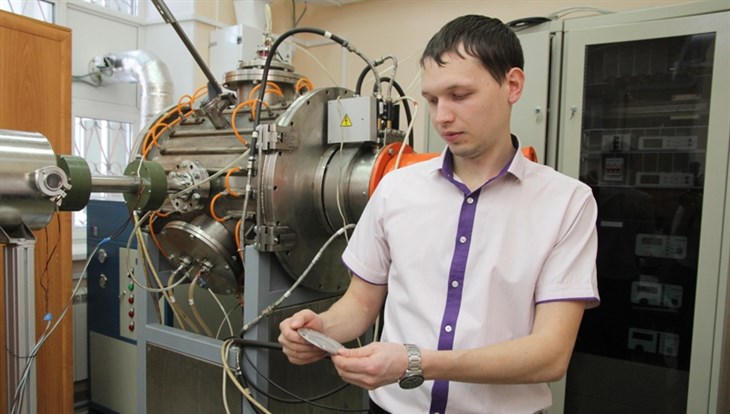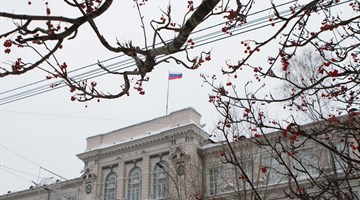© с сайта Томского политехнического университета
© с сайта Томского политехнического университета
TOMSK, Mar 23 – RIA Tomsk. Scientists of Tomsk Polytechnic University (TPU) create special coatings for the fuel elements of nuclear
reactors, which protect the rector from the explosion in case of possible
accidents, the press service of the university said on Thursday.
It is specified that the project realizes by the research team of the
department of general physics of TPU. The basis of the protective coatings is
titanium nitride. Coatings are applied using an installation developed at the
university. As a result, a thin film coating with a thickness of not more than
two microns is obtained. One of the prospects for the use of coatings - is a
new generation of reactors and thermonuclear reactors.
"During the experiments nitride of the titan has well proved: it has a
high hardness, wear resistance, heat resistance, inertness. We found out also
that it protects from penetration of hydrogen into material that is important
for nuclear power", – the assistant of the department of general physics
of TPU Egor Kashkarov is quoted in the message.
© РИА Томск. Павел Стефанский
It is emphasized that the coatings will become the barrier protecting zirconium
fuel elements from influence of water and accumulation of hydrogen.
It is explained that nuclear fuel in reactors is put in special
"tubes" from zirconium alloys, fuel elements are formed from them, in
which a nuclear reaction takes place. As a result of radiolysis of the coolant
(water), and the interaction of the coolant with zirconium at high temperatures
(above 860°C) hydrogen is released. It is able to accumulate in the envelopes
of fuel elements, leading to degradation of their mechanical properties and
destruction.
According to Kashkarov, the higher the temperature in the reactor, the more
hydrogen is emitted: "This happened during the accident at the Fukushima-1
station: because of flooding of the pump equipment the active zone of the
reactor was warmed more than to 1,2 thousand degrees, zirconium-steam reaction
proceeded promptly with formation of a large amount of hydrogen. Explosion of
accumulated hydrogen also became the reason of one of the largest radiation
accidents in the world".